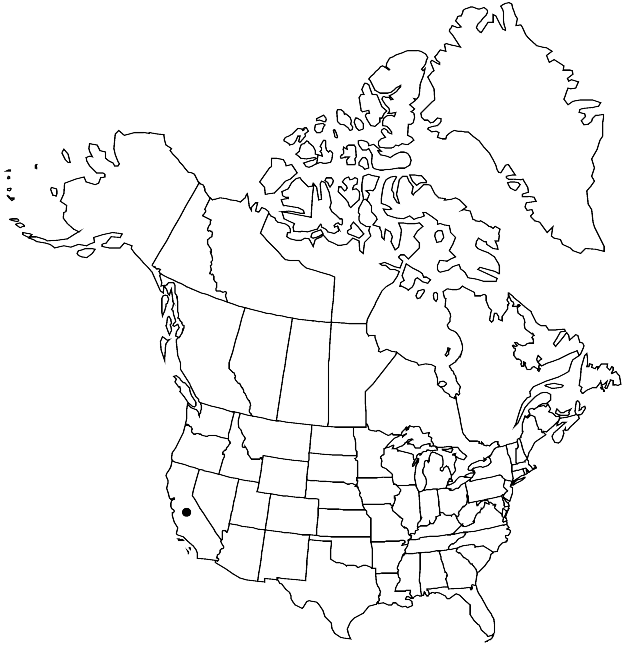Streptanthus brachiatus
Madroño 11: 230, fig. 5. 1952.
Biennials; (somewhat glaucous), glabrous throughout. Stems usually branched basally, rarely unbranched, 1.4–5 (–6) dm. Basal leaves (soon withered); rosulate; shortly petiolate; blade (fleshy, mottled), broadly obovate to suborbicular, 1.5–4 cm, margins coarsely dentate. Cauline leaves: blade ovate to cordate, 0.7–3.7cm × 3–15 mm (smaller distally), base auriculate to amplexicaul, margins serrate-dentate or entire. Racemes ebracteate, (lax, sometimes secund). Fruiting pedicels divaricate-ascending, (straight), 1–2 mm. Flowers: calyx urceolate; sepals (erect), rose-purple (to yellowish at base), (ovate), 5–7 mm, keeled, (apex recurved); petals whitish, (abaxial pair with purple spot, adaxial pair faintly purple-veined), 7–10 mm, blade 1.5–3 × 1–1.5 mm, margins not crisped, claw 5–7 mm, as wide as or wider than blade; stamens in 3 unequal pairs; filaments: abaxial pair (connate to middle), 4–7 mm, lateral pair 2–4 mm, adaxial pair (completely connate, usually recurved), 8–10 mm; anthers: abaxial and lateral pairs fertile, 2–2.5 mm, adaxial pair sterile, 0.7–1.2 mm; gynophore 0.3–0.7 mm. Fruits divaricate-ascending, torulose, nearly straight, flattened, 4–6 cm × 1–1.3 mm; valves each with obscure midvein; replum constricted between seeds; ovules 22–30 per ovary; style 0.1–0.4 mm; stigma subentire. Seeds oblong, 1.8–2.5 × 0.7–0.9 mm; wing 0–0.1 mm wide distally. 2n = 28.
Phenology: Flowering Jun–Jul.
Habitat: Serpentine barrens in chaparral, pine-oak or cypress woodland openings
Elevation: 600-1000 m
Discussion
Of conservation concern.
Streptanthus brachiatus is known from Lake and Sonoma counties. At the time that R. W. Dolan and L. F. LaPré (1989) studied it, infraspecific taxa based on differences in sepal color and pubescence seemed distinct (R. E. Buck et al. 1993). Populations discovered since then do not accord with the putative differences.
Selected References
None.
Lower Taxa
No values specified."elongated" is not a number."thick" is not a number."dm" is not declared as a valid unit of measurement for this property."dm" is not declared as a valid unit of measurement for this property.
